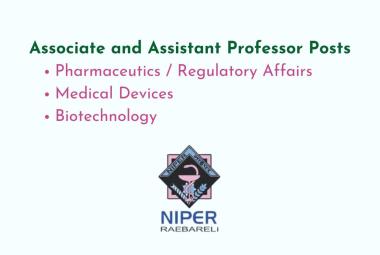Q.3. (a) Illustrate the following with suitable examples
(i)Diamagnetic anisotropy
(ii)Correlation Spectroscopy and its significance
Ans.3. (a)
(i). Diamagnetic Anisotropy: Diamagnetic anisotropy is the shielding and deshielding depending on the orientation of the molecule with respect to the applied magnetic field.
Anisotropy is the property of a molecule in different orientations which show variations in physical properties along different axes of the molecule.
[adsense:336x280:8701650588]
Downfield shift of protons attached to C=C and aldehydic and aromatic protons can be explained by considering the molecular magnetic fields induced by the action of applied field H0 on pi electrons. The magnetic fields induced by pi electrons are directional, i.e., unsymmetrical. A measurement which varies with the direction in which the measurement is taken is said to be anisotropic. Because the effects of molecular fields induced by pi electrons are direction dependent, these are, therefore, termed diamagnetic anisotropic effects. (These effects are contrasted to inductive effects, which are symmetrical around the proton.) Anisotropic effects occur in addition to the ever present molecular fields induced by sigma bond electrons.
Thus the downfield shift of aromatic protons (benzene absorbs at δ 7.37); alkenic protons (δ 4.6-5.9) and the aldehydic proton (δ 9-10) is not only due to the deshielding effect of sp2 carbon (sp2 carbon has high s character and withdraws electrons, deshielding the hydrogen) but also due to diamagnetic anisotropy of the benzene ring and C=C in alkenes and C=O in aldehydes respectively. These two effects combined together deshield the attached hydrogens in these systems.
(ii). COSY (Correlation SpectroscopY): COSY is a method of two-dimensional spectroscopy and also known as H-H correlation spectroscopy. In a COSY experiment, the chemical shift range of the proton spectrum is plotted on both axes.
COSY TECHNIQUE:
When a splitting pattern obtained for a particular proton and interpret it in terms of the numbers of protons located on adjacent carbons, we are using only one of the ways in which NMR spectroscopy can be applied to a structure proof problem. We may also know that a certain proton has two equivalent protons nearby that are coupled by with a J value of 4 Hz. Another nearby proton coupled with a J value of 10 Hz, and three others nearby are coupled by 2 Hz. This gives a very rich pattern for the proton we are observing, but we can interpret it, with a little effort, by using a tree diagram. Selective spin decoupling may be used to collapse or sharpen portions of the spectrum in order to obtain more direct information about the nature of coupling patterns. However, each of these methods can become tedious and very difficult with complex spectra. What is need is a sample, unbiased, and convenient method for relating coupled nuclei.
COSY EXPERIMENT:
The pulse sequence for a 1H COSY experiment contains a variable delay time t1 as well as an acquisition time t2.. The experiment is repeated with different values of t1, and the data collected during t2 are stored in the computer. The value of t1 is increased by regular, small interval for each experiment, so that the data that are collected consist of a series of FID patterns collecting during t2 each with a different value of t1.
To identify which protons couple to each other, the coupling interaction is allowed to take place during t1. During the same period, the individual nuclear magnetization vectors spread as a result of spin coupling interactions. These interactions modify the signal that is observed during t2. Unfortunately, the mechanism of the interaction of spin in a COSY experiment is too complex to be described completely in a simple manner.
A pictorial description must suffice.
Consider a system in which two protons are coupled to each other.

An initial relaxation delay and a pulse prepare the spin system by rotating the bulk magnetization vectors of the nuclei by 90º. At this point, the system can be described mathematically as a sum of terms, each containing the spin of only one of the two protons. The spins then evolve during the variable delay period (called t1). In other words, they precess under the influences of both chemical shift and mutual spin-spin coupling. This precession modifies the signal that we finally observe during the acquisition time (t2). In addition, mutual coupling of the spins has the mathematical effect of converting some of the single-spin terms to products, which contain the magnetization components of both nuclei. The product terms are the ones we will find most useful in analysing the COSY spectrum.
For example- in the COSY spectrum of 2-nitropropane molecules expect to observe coupling between the protons on the two methyl groups and the proton at the methane position.

In the figure 2.3 of COSY spectrum of 2-nitropropane, The first thing to note about the spectrum is that the proton NMR spectrum of the compound being studied is plotted along both the horizontal and vertical axes, and each axis is calibrated according to the chemical shift values (in parts per million).

Significance of COSY: As for the biological significance, fluorescence correlation spectroscopy can yield information on molecule number and diffusion rates from temporal fluctuations arising from the passage of molecules through the confocal detection volume. Fluorescence correlation microscopy (FCM) integrates the FCS modality into a microscope system with high-sensitivity digital imaging and micro-positioning in order to perform FCS measurements in different locations or compartments of living cells. As a most straightforward application to cellular systems, FCS was used to detect binding of ligands to membrane receptors, indicated by the marked decrease of their diffusion constants as compared to the initial values in solution. Such experiments can be can be used as a rapid technique for studying ligandreceptor interactions on living cells and represent a step forward toward large-scale drug screening in cell cultures. In the COSY spectrum of a complete molecule, the pulses are transmitted with short duration and high power so that all possible off-diagonal peaks are generated. The result is a complete description of the coupling partners in a molecule. The COSY method can sometimes detect interactions between nuclei over ranges that extend beyond three bonds. Besides this long range coupling, nuclei that are several atoms apart but that are close together spatially also may produce off-diagonal peaks









